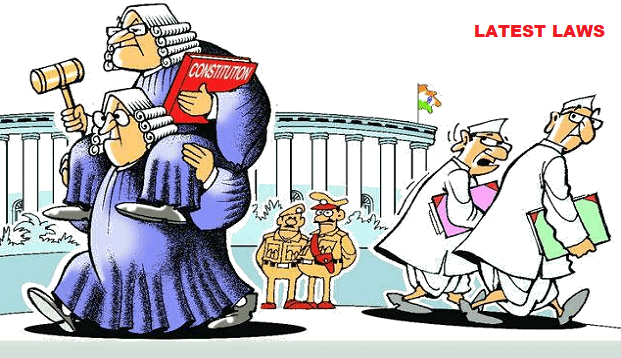April 21, 2018:
So far, no judge of the Supreme Court has been impeached.
How exactly are judges of the Supreme Court of India appointed? Does the Government get a say in their appointment? Can they be removed from office? And has this ever happened?
These questions have seen a long and chequered history, that saw the Judiciary face off against what they perceived as attempts by the Executive to intervene, in order to assert their independence.
Recent events have only highlighted this conflict, including the brewing battle.
The procedure relating to the removal of a judge of the Supreme Court is regulated by Article 124(4) of The Constitution of India and the Judges (Inquiry) Act,1968, by the process of impeachment. There are two grounds for removal - proved misbehaviour or incapacity.
A judge of the Supreme Court can be removed from his office by an order of the President.
The President can issue the removal order after an address by the Parliament, supported by a special majority of each House of Parliament (that is, a majority of the total membership of that House and a majority of not less than two thirds of the members of that house present and voting), has been presented to the President in the same session of Parliament for such a removal.
The step-wise process is:
- A removal motion signed by 100 members (in case of Lok Sabha) or 50 members (in case of Rajya Sabha) is to be given to the Speaker/Chairman. (The removal motion can be introduced in any of the two Houses of Parliament).
- The Speaker/Chairman may admit and reject the motion.
- If it is admitted, then the Speaker/Chairman is to constitute a three-member committee to investigate into the charges. The Committee should consist of the Chief Justice or a judge of the Supreme Court, a chief justice of a high court and a distinguished jurist.
- If the committee finds the judge to be guilty of the charges (misbehaviour or incapacity), the House in which the motion was introduced, can take up the consideration of the motion.
- Once, the House in which removal motion was introduced passes it with special majority, it goes to the second House which also has to pass it with special majority.
- After the motion is passed by each House of the Parliament by special majority, an address is presented to the President for removal of the judge.
- Finally, the President passes an order removing the judge.
So far, no judge of the Supreme Court has been impeached.
The only case where an impeachment motion was initiated and the Inquiry Committee found the judge guilty, was of Justice V Ramaswami of the Supreme Court (1991-1993). But, this motion was defeated in the Lok Sabha.
Picture Source :

























